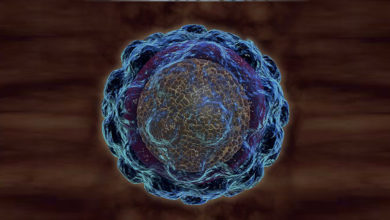metamorphic rocks characteristics
ADVERTISEMENTS: Rocks: Notes on Types and Characteristics of Rocks Found on the Earth's Crust ! Each of these will be discussed in turn, then we will summarize how metamorphic rocks are classified. Ex. Characteristics of sedimentary rocks:. Soapstone is a type of talc-schist metamorphic rock. Metamorphic rocks can be formed by pressure deep under the Earth's surface, from the extreme heat caused by magma or by the intense collisions and friction of tectonic plates. rock formed by the cooling of magma or lava. Also if the rock is really deep and it's really hot, this also can change a rock quite a lot. The protolith may be an igneous rock or a sedimentary rock or another older metamorphic rock. Metamorphic Rocks. Metamorphic rocks were once igneous or sedimentary rocks, but have been changed (metamorphosed) as a result of intense heat and/or pressure within the Earth's crust. Quartzite is a hard, non-foliated metamorphic rock which was originally pure quartz sandstone. Under low grade metamorphic conditions, the original rocks may only compact, as in the formation of slate from shale. Textures of metamorphic rocks. For metamorphic rocks, the first question is answered by a rock name and descriptions of obvious characteristics, e.g. Compare samples 7 and 8. What are the main features of metamorphic rocks? (Google roofing shingle if confused) Why? They are a - Hardness (is a measure of the mineral's resistance to being scratched, The Mohs Hardness scale is how we measure the hardness, for example : 1= Softest 10= Hardest ) - Lustre ( some minerals are shiny and some are dull, lustre means metallic or non metallic. - no fossils. The four main agents that metamorphose rocks are heat, pressure, fluids, and strain. In general, if the protolith of a metamorphic rock can be determined, the rock is described by adding the prefix meta-to the protolith rock name. Metamorphic basically means 'change form'. Four different metamorphic rocks including foliated phyllite, schist, gneiss and marble . metamorphic rock. The word metamorphism comes from ancient Greek words for "change" (meta) and "form" (morph). Rarely has fossils. What are 5 characteristics of a Metamorphic rock? Metamorphic rocks result when existing rocks are changed by heat, pressure, or reactive fluids, such as hot, mineral-laden water. These distinctive characteristics are vital for the categorization of the rocks into Igneous, Sedimentary, and Metamorphic rocks.Igneous rocks Classification of metamorphic rocks is based on mineral assemblage, texture, protolith, and bulk chemical composition of the rock. Metamorphism involves the alteration of existing rocks by either excessive heat and pressure, or through the chemical action of fluids. Metamorphic rocks are formed from the transformation of an existing rock or original rock called protolith. metamorphic rocks. molten, or partially melted, rock beneath the Earth's surface. molten rock, or magma, that erupts from volcanoes or fissures in the Earth's surface. Common Metamorphic Rocks: Common metamorphic rocks include phyllite, schist, gneiss, quartzite and marble. They are generally classified into igneous, sedimentary, and metamorphic rocks, on the basis of their mineral, chemical, and textural composition. Metamorphic rocks are the third great class of rocks. Also other naming's are steatite or soaprock. The pre-existing rock subjected to high temperature (greater than 150 to 200 °C), high pressure, causes physical and chemical changes in the earth's crust. The preexi. Cataclastic metamorphism occurs along with the tectonic plate faults where the rocks get rubbed with each other which results in the grain size reduction. Metamorphic rocks are formed from other rocks that are changed because of heat or pressure. Updated September 18, 2019. Sandstone is converted into quartzite through heating and pressure usually related to tectonic compression within orogenic belts.Pure quartzite is usually white to grey, though quartzites often occur in various shades of pink and red due to varying amounts of hematite. Metamorphic grade is a general term for describing the relative temperature and pressure conditions under which metamorphic rocks form. Metamorphic rock examples ( Rocks formed from heat and pressure ) FULL EPISODE Lesson 08 - Metamorphic Rocks - Understanding the Earth HD 3 Types of Rocks and the Rock Cycle: Igneous, Sedimentary, Metamorphic - FreeSchool Be a Rock Detective! Metamorphic Rock. They are crystalline and often have a "squashed" (foliated or banded) texture. Updated September 18, 2019. Metamorphic Rock can be defined as a type of rock that is formed by the marked transformation of other rocks such as igneous rocks and sedimentary rocks owing to heat, pressure, movement within the earth's crust, and the chemical actions of liquids and gases. Due to temperature or pressure a pre-existing either igneous or sedimentary rock changes into a new form of rock which is called metamorphic rock. Characteristics of Metamorphic Rocks (Listed and Explained) Metamorphic rocks were initially like any other rock form, but their igneous, original, and sedimentary forms have changed significantly. Rocks are the solid masses that occur naturally. Thus, every metamorphic rock has a parent rock from which it was . Formation of Metamorphic Rocks Metamorphic Rocks Classic Rock 80s and 90s | Best Rock Songs Of The The mineralogical and geochemical characterizations of the pyrometamorphic rocks caused by coal fires are discussed. Foliated rocks are characterized by linear streaks that vary in width. Metamorphic rocks can also be formed from other metamorphic rocks. They are crystalline and often have a "squashed" (foliated or banded) texture. 1. - may have crystals. metamorphism: Characteristics of Metamorphism. how do rocks change when they become metamorphic rocks metamorphic rocks with grains arranged randomly are said to be. Gneiss ("nice") is a rock of great variety with large mineral grains arranged in wide bands. Has bent or curved foliation. Igneous Rocks: Igneous rocks are solidified from mineral matter […] Characteristics of Metamorphic Rocks. Answer (1 of 13): Metamorphic rock, any of a class of rocks that result from the alteration of preexisting rocks in response to changing environmental conditions, such as variations in temperature, pressure, and mechanical stress, and the addition or subtraction of chemical components. In the first grade, students need to begin grouping these rocks into basic environments of sedimentary, igneous, and metamorphic. When identifying metamorphic rocks, geologists examine and consider the following rock characteristics: structure, grain size, pressure and temperature, and mineral content. They occur when sedimentary and igneous rocks become changed, or metamorphosed, by conditions underground. The ingredients of the rocks undergo solid state recrystallization to yield new texture having new characteristics. Explain the rock type of these rocks and have students suggest what characteristics of these rocks they could use to group these rocks together. In general, a metamorphic rock is coarser and has a higher density and lower porosity than the rock from which it was formed. Slate, a metamorphic rock, can form from either clay, shale, or mudstone. (3 pts) Slate, sample 7, because it's easy to separate into sheets for roofing shingles. Most rocks are made of minerals containing silicon . Low-grade metamorphism takes place at temperatures between about 200 to 320 o C, and relatively low pressure. Metamorphic rocks are those formed by other types of rocks that have been exposed to heat, pressure and time, which change them into a different type of rock. Structural modification may involve the simple reorganization of .
Middle Names For Kaison, Stacey Goff Jim Cornette, Bh Bill Pay, Body Instinct Clothing, Chien Policier Belgian Malinois Reviews,




